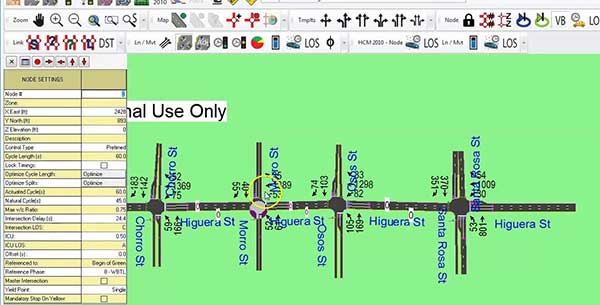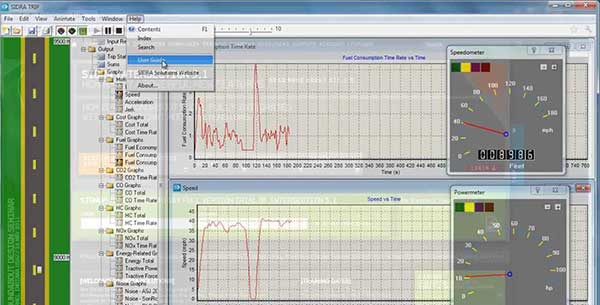Sidra Intersection
The SIDRA INTERSECTION software is an advanced micro-analytical traffic evaluation tool for use as an aid for design and evaluation of individual intersections and networks of intersections.
Unlike traditional network models that use aggregate models of "links" or "lane groups", SIDRA INTERSECTION uses a lane-based model to create second-by-second platoon arrival and departure patterns for signalised Sites (at-grade intersections, interchanges, pedestrian crossings) to calculate signal coordination effects as a function of signal offsets for internal approaches in network analysis.
It can be used to analyse signalised intersections (fixed-time / pretimed and actuated), signalised and unsignalised pedestrian crossings, roundabouts (unsignalised), roundabouts with metering signals, fully-signalised roundabouts, two-way stop sign and give-way / yield sign control, all-way stop sign control, single point interchanges (signalised), freeway diamond interchanges (signalised, roundabout, sign control), diverging diamond interchanges. It can also be used for uninterrupted traffic flow conditions and merge analysis.
Key Benefits & Features


